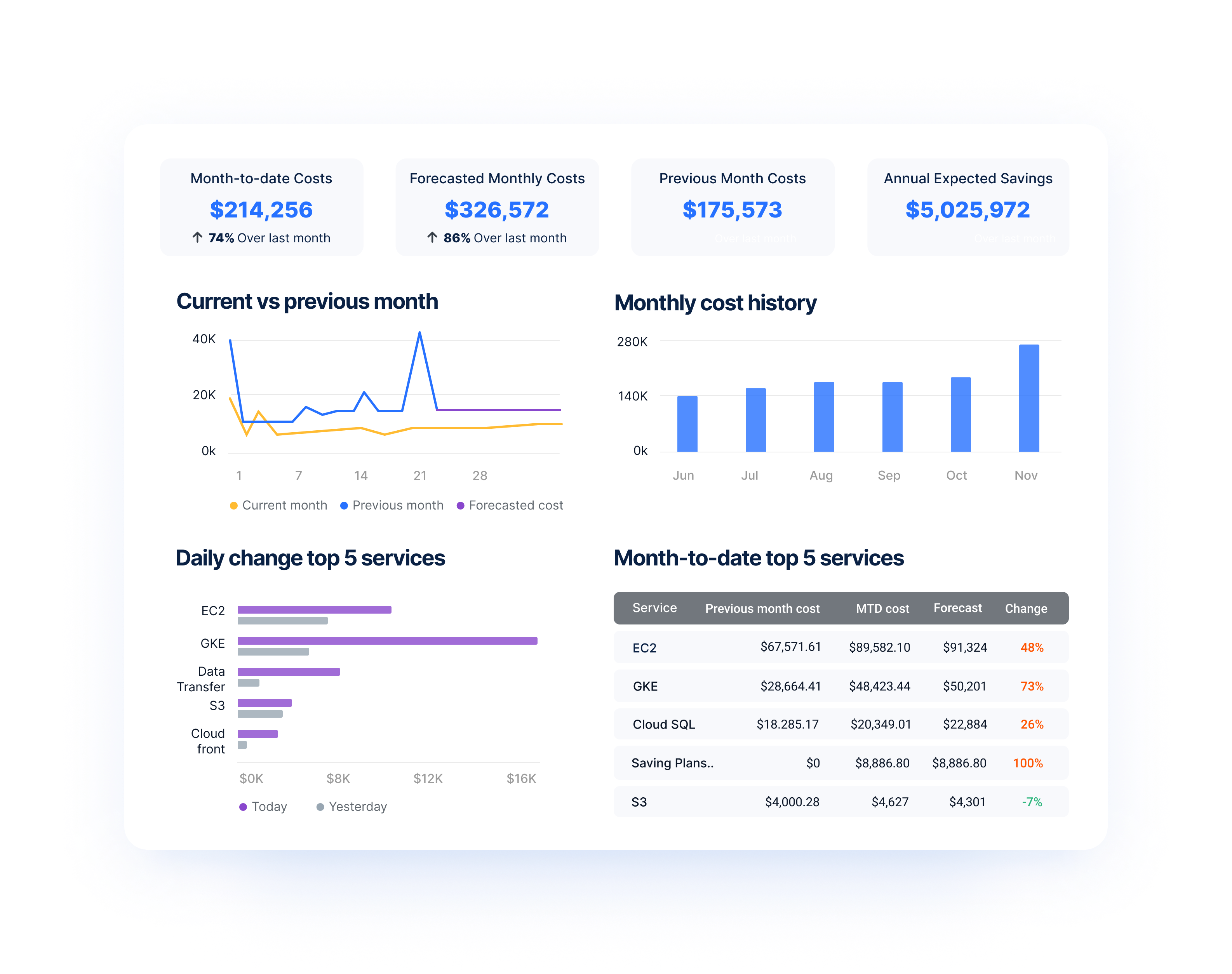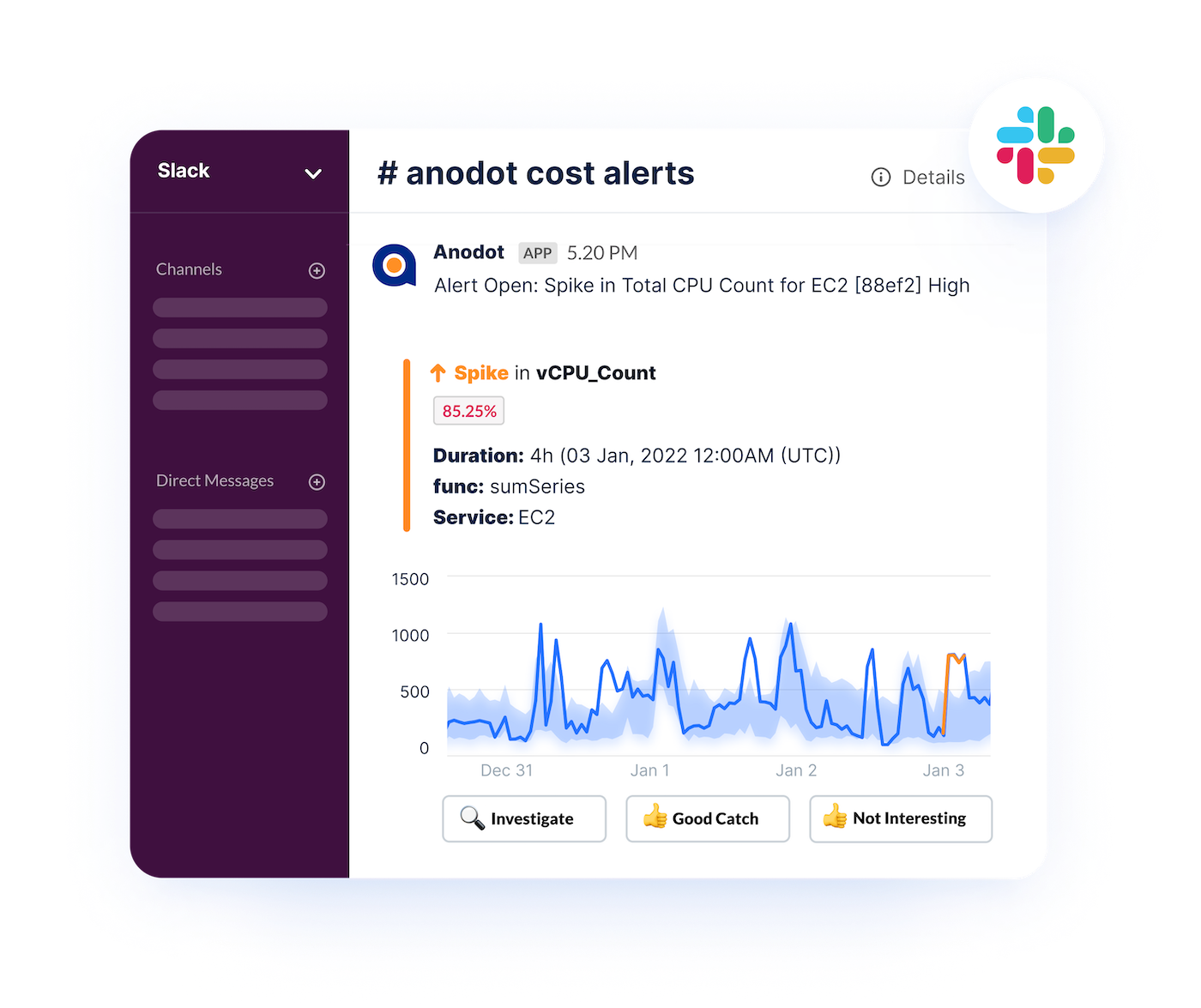The ROI of moving to the cloud
As businesses shift to a digital-first environment, cloud computing will play a dominant role in delivering greater flexibility and faster innovation. In a recent report by Deloitte, nearly 90% of US-based senior decision makers proclaim cloud to be the cornerstone of their digital strategy.
Covid accelerated cloud migration initiatives, with no signs of slowing down. Gartner forecasts worldwide end-user spend on public cloud services will grow by 20.4% in 2022 to a total of $494.7 billion.
The race to cloud is on at full speed ahead for a reason. The benefits are many and strategic, including:
- Business agility
- Rapid innovation
- Accelerated time-to-delivery
- Fast time-to-market
- Scale and elasticity
- Cost efficiency
- Reduced TCO
Yet, with all the benefits, at least half of all organizations say they have yet to realize value from their cloud investments.
This is because there are still many hurdles to cloud optimization, which makes effective cloud cost management and maximizing cloud ROI very challenging.
Challenges to achieving ROI
Return on investment (ROI) is an indicator that signifies whether a business decision or investment led to a positive impact on the company. The measure of ROI is the increase in the value of an investment over time.
At the heart of the challenge in achieving cloud ROI is cloud waste. The most common sources include:
- Scalability and the ability to provision limitless capacity: where the organization grants access to resources whenever they’re needed, but the corresponding cost allocation is neither apparent nor managed.
- Idle resources: when non-production resources that are being used for development, staging, testing, or QA, are being paid for as though they are being utilized 24/7, but they’re not.
- Unattached volumes: where volumes remain attached to terminated services and are not deleted even if they’re not in use.
- Unused virtual machines: that are not turned off once their work is complete.
- Oversized infrastructure: intended for planned capacity but is not being used.
Best practices for maximizing cloud ROI
The only way for organizations to minimize waste and control spend is if they are able to detect when there is cloud waste, where it is, and how to best eliminate it , so they can better manage costs and ultimately maximize cloud ROI.
As such, what organizations need first and foremost is visibility into cloud utilization and the ability to control waste whenever it’s detected.
Let’s take a look at three key best practices organizations can implement to gain such visibility and to finally get the control they need over their cloud costs.
Gaining visibility with a Cloud Center of Excellence
An important driver of visibility is the Cloud Center of Excellence (CcoE), whose mandate it is to facilitate and nurture cooperation among business units across the entire organization, so they can:
- Share best practices
- Collaborate on optimizing the value of cloud computing
- Make data-driven decisions
- Establish an organization-wide framework for cloud operations
By facilitating cross-unit communications for sharing and collaboration, the CCoE provides more stakeholders visibility into cloud utilization.
For example, if developers are putting workloads in the cloud, with a CcoE in place, they will have the framework (and motivation) to communicate this to other teams, who will now be aware, which is what visibility is all about.
Driving visibility with FinOps
The goal of FinOps, also known as cloud financial management, is to drive financial accountability while maximizing the business value of cloud. According to the FinOps Foundation, FinOps is also a cultural practice that enables businesses to get maximum business value by helping engineering, finance, technology and business teams to collaborate on data-driven spending decisions.
With a view to attaining visibility, one of the key tasks of FinOps is monitoring. So, if there is a sudden spike in the average hourly bucket size of a specific service over the course of a week, for example, with the right tools and processes in place FinOps will be able to detect the cost anomaly and relay this vital insight to the individuals charged with correction, thus granting them visibility.
From visibility to control
Now that we know how we can achieve greater visibility, the next step towards maximizing cloud ROI is to control costs.
Controlling costs is driven by reducing waste through corrective actions. For example, if you have detected waste from specific service types then you can visualize the business mappings between who and what are using which services. You can also monitor for better workload-to-instance options to better align needs with the services being consumed.
If you find that costs are outpacing utilization for certain services, you can size down overprovisioned infrastructure or terminate unused zombie infrastructure.
And, if the unit price is too high from your on-demand pricing plan, you can negotiate a discount with your provider for reserving capacity through savings plans, reserved instances, and committed use discounts.
Forecasting Cloud Costs to Inform Budgets
Accurately and continuously forecasting future cloud expenditures is the best way to anticipate results, create budgets and respond quickly enough to keep cloud costs from spiraling out of control.
Accurate forecasting ensures lines of business are adhering to their budgets by alerting stakeholders when cost centers are exceeding predefined limits.
Organizations with mature FinOps—a cloud financial management discipline and cultural practice—have teams that are collaborating to build forecast models from which to establish budgets that align with the goals of the business.
Measuring cloud ROI
The traditional ROI formula of return over costs is a difficult equation to apply to cloud computing. To calculate the true value of cloud adoption, organizations need to factor in benefits that are not always associated in dollar terms, such as increased business agility and elasticity.
The best measure of cloud ROI is associated with factors that drive an organization to move to the cloud in the first place. The most common reasons associated with migration include:
- Moving workloads from data centers to cloud environments – Compare the costs of the equipment and maintenance of an on premise environment to the OpEx costs of cloud computing.
- Scalability – Quantify the cost savings associated with being able to quickly accommodate sudden spikes or short term surges in resource needs.
- Business agility – Faster responses to business requests and quicker development times result in greater cost and performance efficiencies.
- Efficiency – On premise hosting requires substation costs for resources that some organizations may not fully use while cloud computing is most commonly a pay for what you use model.
Maximizing cloud ROI with Anodot
Anodot is helping organizations around the world maximize cloud ROI by delivering visibility into cloud utilization and enabling them to control waste and spend. From a single platform, Anodot provides complete, end-to-end visibility into your entire cloud infrastructure and related billing costs.

The AI-powered platform constitutes a complete cloud FinOps solution that correlates spend with business KPIs. It easily connects to any cloud provider and delivers complete visibility into AWS, Azure, GCP, and Kubernetes costs.
Reducing cloud waste with Anodot’s easy-to-action savings recommendations and avoid bill shock with anomaly detection and alerts.

From a single platform, Anodot provides complete, end-to-end visibility into your entire cloud infrastructure and related billing costs. By monitoring your cloud metrics together with your revenue and business metrics, Anodot enables cloud teams to understand the true cost of their SaaS customers and features, enabling ROI and the promised value of the cloud.
Start optimizing your cloud costs today!
Connect with one of our cloud cost management specialists to learn how Anodot can help your organization control costs, optimize resources and reduce cloud waste.




